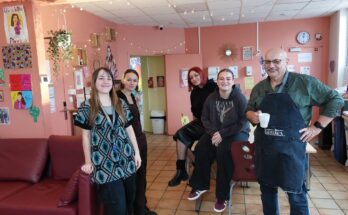The Roman footprint can be seen among the paths dotted with abundant bovine excrement, just look closely. The granite masses rest eternally, to the detriment of natural erosion, after centuries of being used for sparkling tasks such as the construction of the Roman aqueduct of Segovia with ashlars. The imperial settlements in the area used the stones of this granite deposit, called El Berrocal quarry, an area of approximately 250 hectares near Ortigosa del Monte, 12 kilometers from the emblematic Segovian construction, declared a World Heritage Site in 1985.
If the aqueduct is still standing today (it was built between the 1st and 2nd centuries and served to supply the city until the 1970s) it is largely due to the robust material of El Berrocal. The rock masses are still visible with the marks of the metal wedges used to break them, work the chosen block and transport it on carts to the factory. Experts at the site have verified that it corresponds to the granite of the aqueduct and are trying to know the historical sequence and other monuments supported by this stone.
The cathedral of Segovia can be seen in the distance from the countryside where for years the Romans obtained the fundamental resource for the aqueduct. Today a team of archaeologists is looking for his footprints at the site. Close observation of the blocks reveals a diversity of tones on the gray granite, it being evident that there are massifs that have been intact for millions of years and others that have been sawn off long ago. The lichens also facilitate archaeological investigations, as do the indentations the size of a finger, a sign that metal punches were driven into them by the excavators so that, by hitting them with hammers, they broke them and transferred the pieces obtained onto ox carts headed to Segovia. “Within the face of the quarry we found spaces for anvils, areas burned by the forges, remains of metal shavings, several structures for the protection of animals or storage areas and workshops,” explains archaeologist Clara Martín.
Work began in 2017, with funds from the Government of Castilla y León, to first identify the extraction areas. In 2018, further surveys made it possible to identify the exit route from the quarry, since along the 12 kilometers that separate the pasture from the city there is a Roman road, a flat route except for a valley with a stream in whose surroundings the ancient road is still visible. Other structures and construction remains were making their appearance when a two-kilometer route was marked in 2019, with signs and labels that contextualize the rocks and their characteristics. In 2020 there was a break during which Clara Martín became a councilor and then mayor of Segovia for the PSOE, until 2023.
When the position of mayor passed to the PP in 2023, Martín recovered his academic duties in El Berrocal with the support of the Municipality of Ortigosa del Monte, the Provincial Council and the help of the Council, which for a certain period paralyzed contributions. In the background, the expert collaboration of the Geological and Mining Institute, whose lithic extractions from the preserved Roman part of the aqueduct revealed that it most likely came from this locality. “The objective now is to know the historical sequence, chronological evidence that provides information about the quarry in different historical periods and to identify the ancient fronts where archaeological materials from the Roman era and other periods are found,” says the specialist, who hopes to “identify other monuments that may have used the material from El Berrocal.”
Currently the Riofrío Palace (18th century) is suspected, a sign that this stone was appreciated in very different eras. “They had an almost industrial production, almost all the work was done here and the granite continued to be extracted in the same way, with metal wedges,” he explains together with those ancient engravings.
Javier Martínez, geological engineer and senior scientist at the Mining Geological Institute, points out that his studies reveal that more than half of the 200 segments analyzed in the infrastructure are compatible with El Berrocal. There may be more quarries, he admits, but this one seems to be the main one for builders. Identifying the origin of the material, adds the specialist, is essential to have information on the context in which the aqueduct was built and with what logistics, as well as more practical functions: “If at any time you need to incorporate stone for reconstructions or replacements of deteriorated ashlars, it is advisable to use the original stone for material compatibility”.
Juan Carlos Cabrejas, independent mayor of Ortigosa del Monte, remembers that when he was little the boys went on excursions to the places where today the bases of the columns of Roman buildings can be seen. Cabrejas celebrates the connection of the local population with El Berrocal, now yellowish, but green or frozen and snow-covered in the coming months, a “very beautiful” enclave that attracts many people to walk or see the vestiges of that exploitation active until the last century.
The councilor fears that the space will become overcrowded with tourists and curious people, but applauds the discoveries around Ortigosa: “We have spoken in public about the work that has been done, the people here know it, we go on excursions, some theatrical guided tours, cultural events so that people recognize it… They have always said about the aqueduct, but now we know that it is 2,000 years old, which is no small thing.” At the time there were rumors and legends that such exploitation existed there, but science has accredited the folklore: “It is very satisfying that the stones of the aqueduct came from my town, it’s a bit senseless pride but that’s how it is.”



